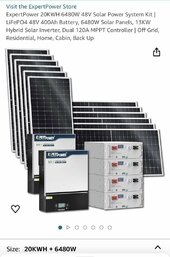Depending on what I have running I am already flirting with my 100A Load. I have turned everything in my house on and measured over 100A at the main, luckily this doesn't seem to trigger the breaker, and I have never triggered my main from too much draw. But I am planning on adding and will be drawing much more than 100A - which was the reason for the service upgrade.
So at a minimum my ideal setup would be my 100A service ----> Inverter that can utilize all 100A from the grid without backfeeding -----> 100A load on subpanels
That doesn't help me with the additional service hopes that kicked all this off... so
Pipe dream would be an inverter than can output ~200A of 240v AC. Obviously it would be great if that was solely supplied from the solar/batteries, but I would have no problem if during high load demands 100A was still coming from the grid
I do have a smart meter
So at a minimum my ideal setup would be my 100A service ----> Inverter that can utilize all 100A from the grid without backfeeding -----> 100A load on subpanels
That doesn't help me with the additional service hopes that kicked all this off... so
Pipe dream would be an inverter than can output ~200A of 240v AC. Obviously it would be great if that was solely supplied from the solar/batteries, but I would have no problem if during high load demands 100A was still coming from the grid
I do have a smart meter









